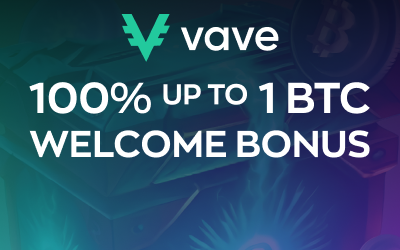The recent cryptocurrency integration with gaming has added more excitement for enthusiasts. Nevertheless, gamers have to be aware of the challenges surrounding the industry and avoid falling behind when the time comes to adapt.
Player expectations have evolved over time compared to the days when we were all playing on the PS1 or Nintendo Game Cube. Graphics and storylines have drastically improved and with gaming going online, things got even more exciting. The latest development is the inclusion of cryptocurrencies, which adds yet another layer to one of the fastest-developing industries.
So, if you are keen on exploring how cryptocurrencies impact the gaming industry, you have come to the right place. In this article, we will discuss how crypto works in gaming and the pros and cons for the players involved. Furthermore, you will understand the role that blockchain and NFTs play in it. We will also explore play-to-earn models and take a look at the future of crypto games.
Cryptocurrency Integration in Video Games
As we have mentioned earlier, the gaming industry has embraced Non-Fungible Tokens (NFTs) as well as blockchains. This marks a massive advancement in the video game industry. The mix of online gambling and NFTs has given players new opportunities to earn money.
Today, most players can buy and sell digital items just like they do in real life. However, like the initial stages of any merger, there are still some adjustments to be made.
Below, we listed some of the pros and cons of crypto gaming being adopted in the industry:

Pros of Gaming Crypto Adoption:
- New revenue flow: The Play-to-Earn (P2E) model can turn gaming into a real job. Players can make money by earning in-game assets or trading crypto and NFTs.
- Transparency: Thanks to decentralization, gamers can control their assets without intermediaries and process transactions safely.
- Complete control: Blockchain games give players authority over various aspects like their virtual assets and gameplay decisions.
Cons of Gaming Crypto Adoption:
- Lack of regulation: The absence of regulations in the market can lead to potential scams. This ultimately slows down the adoption of cryptocurrency gaming as players are less inclined to trust them.
- Volatility:Cryptocurrency price fluctuations can reduce the values of in-game items and the overall player’s balance.
- Complexity: The blockchain process can be a little difficult to understand. This may deter new gamers from getting involved with cryptocurrencies and NFTs.
Difference Between Traditional and Crypto Gaming
Since we are discussing the topic, it is essential to know the differences between traditional and crypto gaming. Although the two may seem quite similar, in reality, they are not. We listed down a few key points to help you distinguish them.
Monetization
Traditional games are typically monetized through subscription models or in-game purchases. Meanwhile, blockchain games allow players to monetize their in-game assets and even sell their NFTs.
Decentralization
Traditional games are centralized and managed by publishers or game developers. Blockchain games, on the other hand, run on a decentralized distributed network. This increases their transparency and makes them less reliant on a central authority.
Gameplay
Conventional games have a set structure and rules created by their developers. In contrast, blockchain games offer a more immersive gaming experience as users influence game mechanics and governance.
Ownership and Trading of Assets
In traditional games, developers own all in-game assets, and players have no ownership rights. In blockchain games, however, users can own their assets as non-fungible tokens (NFTs).
Security
While traditional games offer good security measures to prevent hacks and cheats, their centralized nature makes them vulnerable. Blockchain games, meanwhile, use cryptographic algorithms and decentralized networks to ensure the security of assets and prevent fraud. Despite all of that, of course, no game is immune to risks.
Blockchain in Gaming
Blockchain games integrate elements of blockchain technology, often minting in-game assets as NFTs. This allows players to trade, sell, and fully own their items. These games usually use digital assets as in-game currencies. On most occasions, players can earn cryptocurrency by completing levels or achieving milestones.
Remember the GTA San Andreas game that we all were hooked on as kids? Imagine if those in-game properties and items were NFTs you won. You could basically create a real-world economy within the game and trade your tangible assets with other players.
Blockchain also offers unique transferability and protection of assets. To give you a clearer picture, let’s use another example. In November 2022, Call of Duty Warzone 2.0 servers were consistently lagging and crashing so players faced a potential loss of their in-game items. Had this game used blockchain technology, these items could have been stored as NFTs in players’ wallets.
NFT’s & Play-to-Earn
The gaming industry completely changed once Non-Fungible Tokens (NFTs) and Play-to-Earn (P2E) models emerged. Users can now own unique weapons, cards, or clothing within games. They can also trade interests, personalities, and lands. This new idea has made entertainment a way to make money.
The concept of virtual gaming has eliminated the stereotype that gaming is only for children. This is largely due to the influence that P2E and NFTs have had. These days, players of all age groups can join the world of cryptocurrency games and participate in them. More means of income – especially disposable income – allow gamers to simply have fun without going through all the stress.
Examples of Successful Crypto-Gaming Projects
Let’s take a look at some of the most promising crypto-gaming projects and see what they are about.
Illuvium
Illuvium aims to create the first-ever Interoperable Blockchain Game IBG). Set in a futuristic sci-fi open world, players can own land, build cities, battle against each other, and collect NFT creatures called “Illuvials”. You can even train your Iluvials and form teams to participate in strategic auto-battle matches against other players or NPCs.
While the graphics and world size are impressive, the interoperability is what makes the whole project stand out. What does interoperability mean?
It basically allows different blockchain games to interact and communicate with each other. As a result, you can transfer your in-game assets in the form of NFTs within the Illuvium world or other external gaming ecosystems.
In this specific case, the game is built on the Ethereum Blockchain. So, Illuvium players can trade their unique Illuvials across different platforms to earn rewards and collect points. These points can be later converted to the game’s native token $ILV.
Keep in mind, though, that the project is still in its beta phase, so it’s not 100% stable yet. Despite this, Illuvium’s gorgeous graphics and massive open world have already generated quite a lot of attention, not only from crypto users but also from traditional gamers.
Metacade
Metacade has gained a lot of engagement and awareness in the crypto world. The idea of this project is to make the world’s biggest and most impressive arcade game. It aims to create a hub, where players, developers, and investors can gather and collaborate together. For instance, you can just hang out in Metacade, or you can play P2E games and participate in tournaments.
Metacade also rewards users with gaming crypto coins. As it’s built on the Base network, transactions are fast and cost-effective which makes it even more attractive. So, we won’t be surprised if Metacade becomes the virtual “headquarters” for the GameFi community and Web3 gaming sector.
Microtransactions and Token Economies
Tokenomics is the analysis of the economic aspects of a cryptocurrency or blockchain project, particularly the creation and allocation of its digital tokens. It is a combination of the words “token” and “economics”.
Microtransactions and token economies are paramount for the sustainability and profitability of P2E games. However, the NFT games crash in 2022 pointed out the necessity to deliver fun experiences and incentives that will attract real players. If companies focus only on P2E, they will not remain profitable in the long term. This issue was seen with Axie Infinity, where investors dominated the spotlight and the gameplay lacked amusement.
Designers must also ensure that microtransactions and tokenomics benefit the overall experience. This must happen organically and not merely serve as financial instruments. Ultimately, a game’s entertainment factor is crucial for its success. No token economy or P2E model can thrive for long without satisfying players.
The Future of Gaming and Cryptocurrency

What is the future of crypto gaming? It is still difficult to foresee, but one can see that this new idea needs a lot of analysis and ingenuity. A lot of thinking and development has to go on behind the scenes if it is to survive. Therefore, designers must keep working on the new model, Play-and-Earn, instead of the old one, Play-to-Earn.
Play-to-Earn makes it hard to keep players curious because the gameplay is often seen as less compelling. On many occasions, it solely prioritizes making money. In distinction, Play-and-Earn aims to make the online gaming venture satisfying and attract both traditional gamers and crypto users. This is because it focuses on fun and profit at the same level.
As a result, Play-and-earn seems like a natural resolution. The large number of companies that have already initiated blockchain game projects based on the Play-and-Earn principle is proof of that. Perhaps the biggest among them is FIFA. This has the opportunity to expose crypto gaming to a more expansive audience.
Conclusion
Playing video games should not feel like work. Many developers have already embraced this idea and are focusing on creating games that entertain players, albeit with an optional way to earn.
The only thing that can challenge this industry is the constant fluctuation in the crypto market. It could endanger the progress of blockchain games and make potential players reluctant to trust such platforms. However, it is a part of the natural world, as every creative project and innovation comes with a bit of risk.
FAQ
What are microtransactions in crypto games?
Can play-to-earn games be a side hustle?


















